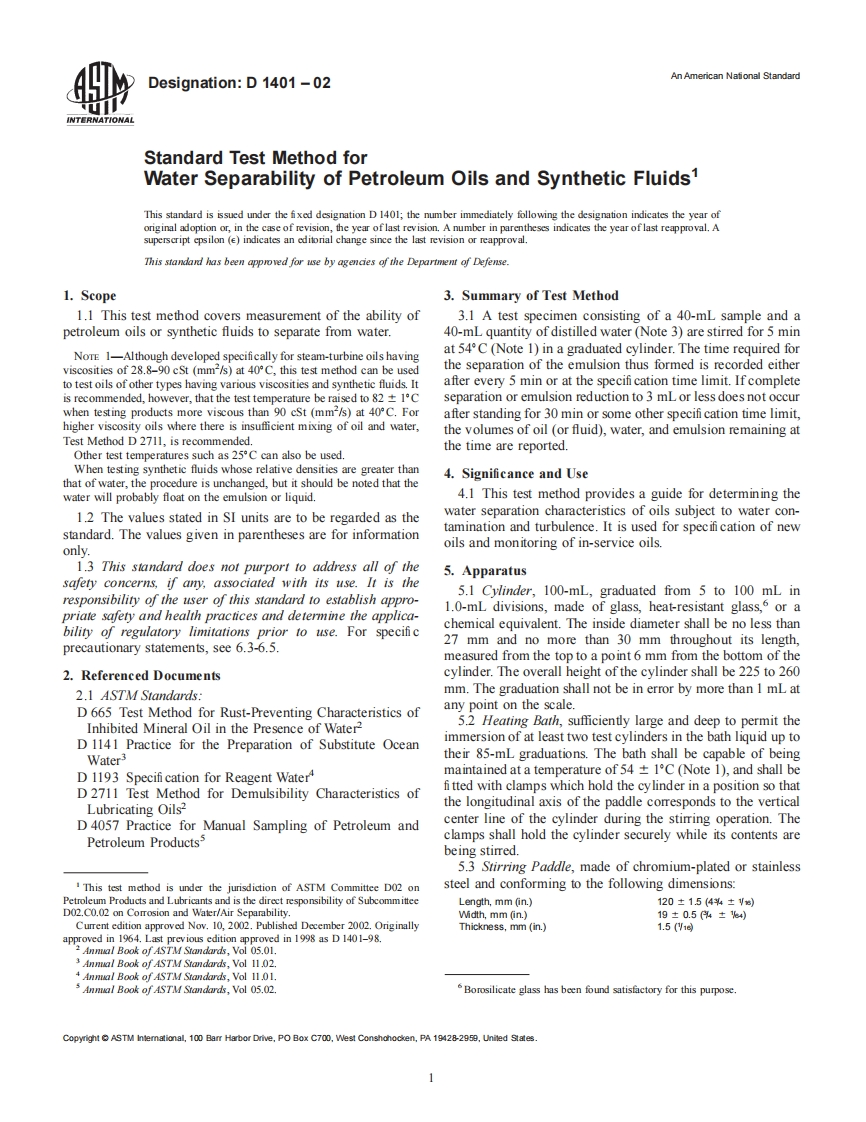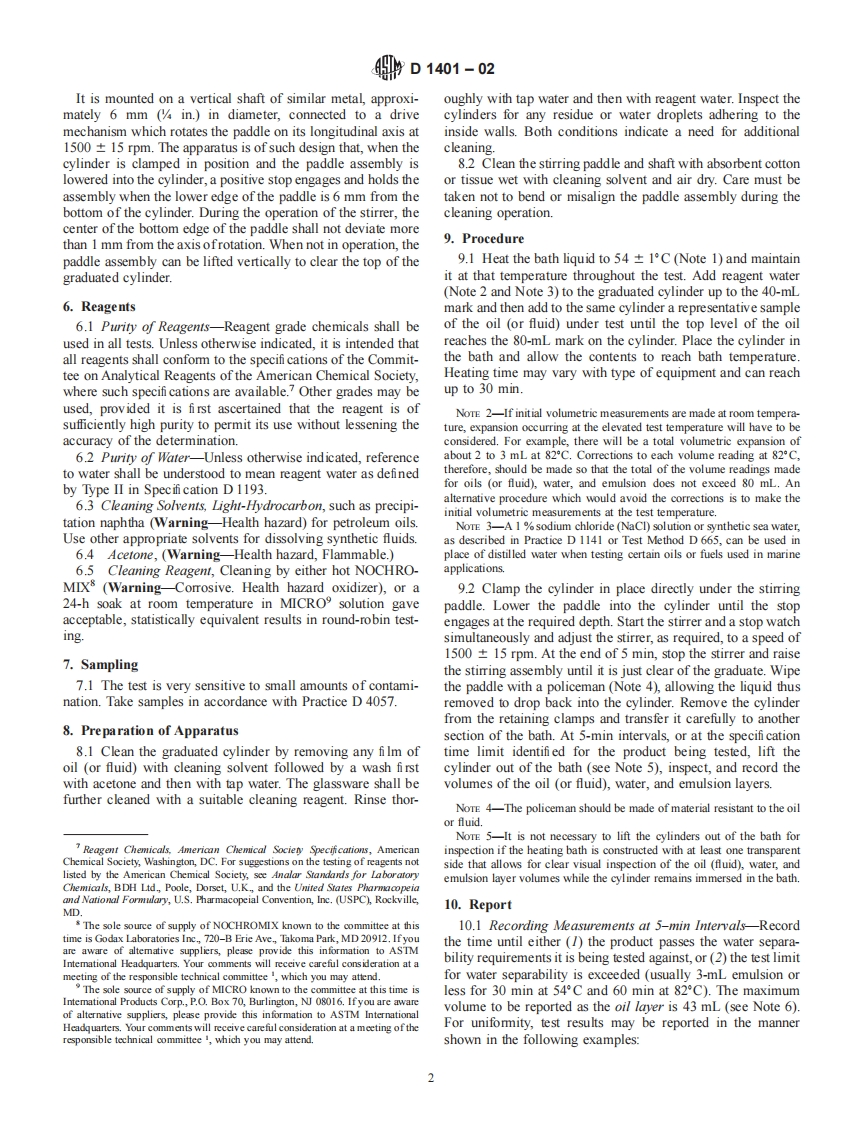

第1页 / 共4页

第2页 / 共4页
试读已结束,还剩2页,您可下载完整版后进行离线阅读
THE END
Designation:D 1401-02An American Nafional StandardNTERNATIONALStandard Test Method forWater Separability of Petroleum Oils and Synthetic Fluids1This standard is issued under the fixed designation D 1401;the number immediately following the designation indicates the year oforiginal adoption or,in the case of revision,the year of last revision.A number in parentheses indicates the year of last reapproval.Asuperscript epsilon ()indicates an editorial change since the last revision or reapproval.This standard has been approved for use by agencies of the Department of Defense.1.Scope3.Summary of Test Method1.1 This test method covers measurement of the ability of3.1 A test specimen consisting of a 40-mL sample and apetroleum oils or synthetic fluids to separate from water.40-mL quantity of distilled water (Note 3)are stirred for 5 minNorE 1-Although developed specifi cally for steam-turbine oils havingat 54C(Note 1)in a graduated cylinder.The time required forviscosities of 28.8-90 cSt (mm/s)at 40C,this test method can be usedthe separation of the emulsion thus formed is recorded eitherto test oils of other types having various viscosities and synthetic fluids.Itafter every 5 min or at the specifi cation time limit.If completeis recommended,however,that the test temperature be raised to 821Cseparation or emulsion reduction to 3 mL or less does not occurwhen testing products more viscous than 90 cSt (mm/s)at 40C.Forafter standing for 30 min or some other specifi cation time limit,higher viscosity oils where there is insufficient mixing of oil and water,the volumes of oil (or fluid),water,and emulsion remaining atTest Method D 2711,is recommended.the time are reported.Other test temperatures such as 25C can also be usedWhen testing synthetic fluids whose relative densities are greater than4.Significance and Usethat of water,the procedure is unchanged,but it should be noted that thewater will probably float on the emulsion or liquid.4.1 This test method provides a guide for determining the1.2 The values stated in SI units are to be regarded as thewater separation characteristics of oils subject to water con-standard.The values given in parentheses are for informationtamination and turbulence.It is used for specifi cation of newoils and monitoring of in-service oils.only.1.3 This standard does not purport to address all of the5.Apparatussafety concerns,if any,associated with its use.It is theresponsibility of the user of this standard to establish appro-5.1 Cylinder,100-mL,graduated from 5 to 100 mL in1.0-mL divisions,made of glass,heat-resistant glass,or apriate safety and health practices and determine the applica-bility of regulatory limitations prior to use.For specificchemical equivalent.The inside diameter shall be no less than27 mm and no more than 30 mm throughout its length,precautionary statements,see 6.3-6.5.measured from the top to a point 6 mm from the bottom of the2.Referenced Documentscylinder.The overall height of the cylinder shall be 225



请登录后查看评论内容